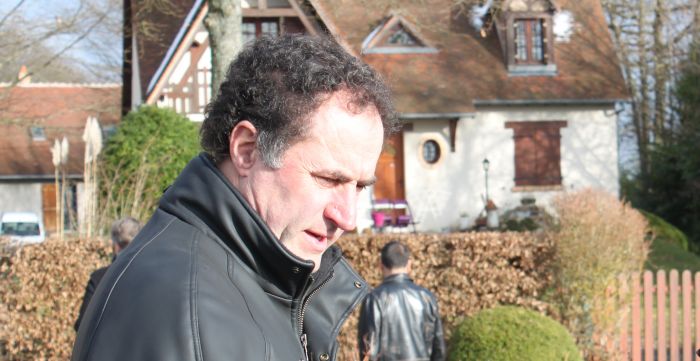
producer profile
10.06.2019
Domaine Girard Producer Profile
<p>Domaine Fernand Girard is currently run by Alain Girard. He comes from several generations of winemakers in the tiny village of Chaudoux, located a few miles northwest of the town of <glossary title="908">Sancerre</glossary> and directly north of the famous town of <span class="zalup"><span><glossary title="278">Chavignol</glossary><span>.</span></span></span></p>
<p>He tends 14 <glossary title="523">hectares</glossary> of vines in total, sells some <glossary title="363">cuvées</glossary> to <glossary title="729">négociants</glossary> and <glossary title="185">bottles</glossary> only a portion of the total production under his family name. The "La Garenne" <glossary title="363">cuvée</glossary> originally came from a 2.5 <span class="zalup"><span><glossary title="523">hectare</glossary> </span></span> vineyard of that name, a <glossary title="1133">plot</glossary> on a steep east-facing slope with a very rocky <glossary title="596">limestone</glossary> soil. The <glossary title="266">chalky</glossary> soil brings out the characteristic<span class="zalup"><span> <glossary title="455">flinty</glossary><span>,</span></span></span> mineral and green notes of <span class="zalup"><span><glossary title="927">Sauvignon Blanc</glossary><span>.</span></span></span> On La Garenne’s <span class="zalup"><span><glossary term="Drainage" title="1199">well-drained</glossary><span>,</span></span></span> warm slopes, the grapes achieve exceptional ripeness and fruit. </p>
<p>Over the years, as demand increased, it became clear that Alain would need to <glossary term="Blend" title="168">blend</glossary> his sites together to produce more <glossary term="Estate" title="427">estate</glossary> wine. Today, only one wine is produced in much larger quantities than when we started working together in the early 1990's. In a crass move of commercialism, it was agreed to keep the name "La Garenne" since it was a "recognizable brand". <br />
<br />
Compared to those in other <glossary title="1103">viticultural</glossary> regions in France, most of <glossary title="908">Sancerre’s</glossary> <glossary title="1089">vignerons</glossary><em> </em>have stricter than usual standards of <glossary title="254">cellar</glossary> tidiness and hygiene. It might be the influence of the local goat cheese making, which was traditionally done on a very small, <glossary title="122">artisanal</glossary> scale, by people who knew the importance of a pristine environment.<br />
<br />
The Girards have an impeccable <glossary title="363">cuverie</glossary> and <glossary title="1104">vinify</glossary> with modern technology: a <span class="zalup"><span><glossary title="811">pneumatic press</glossary><span>,</span></span></span> <glossary title="986">stainless-steel</glossary> <span class="zalup"><span><glossary title="1140">vats</glossary><span>,</span></span></span> a <glossary title="1018">temperature control</glossary> system during <span class="zalup"><span><glossary title="441">fermentation</glossary><span>,</span></span></span> and an air-conditioned space for <glossary title="74">aging</glossary> in <glossary title="1140">vats</glossary> and stocking bottles. They counterbalance technology by practicing old-fashioned vineyard work, where <glossary title="526">herbicides</glossary> and treatments are used sparingly, and by never adding <glossary title="321">commercial yeasts</glossary> to induce <glossary title="441">fermentation</glossary> or add flavors.<br />
<br />
Their <glossary title="908">Sancerre</glossary> is everything one hopes for when thinking about <font color="#7b143e"><b>the region</b></font><span class="zalup"><span><span>:</span></span></span> it is bright, lively, pleasantly aromatic, has zippy <glossary title="71">acidity</glossary> but low astringency. It is a wonderful food wine that is as versatile as it is easy to drink.</p>
Article
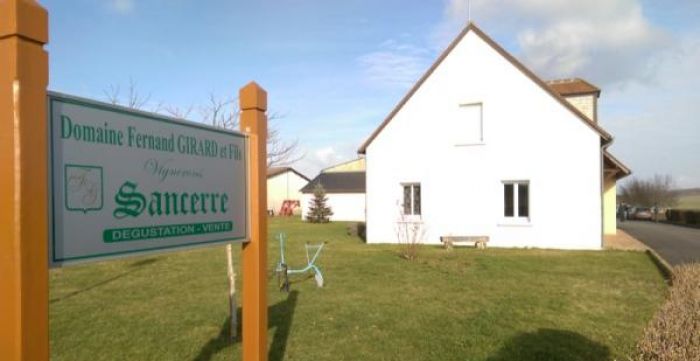
producer visit
25.07.2019
This visit with Alain Girard took place in January, 2015
<p><strong><em>This visit with Alain Girard took place in January, 2015.</em></strong></p>
<p><strong><em>Words by Jules Dressner, photos by Noah Oldham, David Sink, Patrick Capiello and Hadley Foss.</em></strong></p>
<p>Someway somehow, I'd never visited Alain and Fernand Girard. I'm not really sure why; we've been working with them so long that they definitely fall into the <em>"We are going to drag five year old Jules and three year old Alyce (my sister) all around France and bore them to death by visiting </em><glossary title="1089"><em>vignerons</em></glossary><em> for two weeks straight"</em> era of Louis/Dressner Selections. You see, there was a time when Joe and Denyse would spend their entire summers in France visiting growers. And because we were too young to stay at the house by ourselves, that meant we were obligatorily included in these insanely boring road trips. Plus French TV in the summer only played reruns of <a href="https://www.youtube.com/watch?v=Enu4naYli6A" target="_blank">MacGyver</a> and Knight Rider (aka K-2000)! <br />
<br />
So yeah, I wasn't the biggest fan of summer vacation growing up...<br />
<br />
But I'm not here to bore you with the past. I'm here to write about <span class="zalup"><span><glossary term="Sancerre" title="908">SANCERRE</glossary><span>.</span></span></span><br />
<br />
Before heading to the vines, Alain Girard gave us a quick introduction to the <span class="zalup"><span><glossary title="427">estate</glossary><span>.</span></span></span> He took over from his father Fernand about 20 years ago, and is the fifth generation working his land. Here's a great picture from that era:</p>
<p><img src="http://louisdressner.com/uploads/images/article/2019_Jul_25//26/ab/26ab7f400f6b5f0a76d709c751298bac.jpg" /></p>
<p>14 <glossary title="523">hectares</glossary> of vines are spread over five <glossary title="322">communes</glossary> with three distinct <span class="zalup"><span><glossary title="1026">terroirs</glossary><span>:</span></span></span> <glossary title="504">gravely</glossary> soils, <glossary title="455">flint</glossary> and heavy <span class="zalup"><span><glossary title="301">clay</glossary><span>.</span></span></span> <br />
<br />
We began the visit checking out the <glossary title="455">flint</glossary> soils of <span class="zalup"><span> <glossary title="898">Saint-Satur</glossary><span>:</span></span></span></p>
<p><img src="http://louisdressner.com/uploads/images/article/2019_Jul_25//6c/a4/6ca4d305ffed7e444f1ca25411159fd2.jpg" /></p>
<p><img src="http://louisdressner.com/uploads/images/article/2019_Jul_25//d4/d8/d4d8c02a7f9a40dc49f94373f36e4b56.jpg" /></p>
<p><img src="http://louisdressner.com/uploads/images/article/2019_Jul_25//74/c7/74c74da915128458ee587afe9f33e329.jpg" /></p>
<p><img src="http://louisdressner.com/uploads/images/article/2019_Jul_25//93/10/931076c1688643aaf0d73df9fa2b367f.jpg" /></p>
<p>This next picture isn't really necessary, but I like how it highlights my R698 EVO's:</p>
<p><img src="http://louisdressner.com/uploads/images/article/2019_Jul_25//5b/ee/5bee7c02ab2c2a6ed6fbbfa7a5bb9570.jpg" /><br />
<br />
<strong>Louis/Dressner Selections: We Wear Nice Sneakers™</strong><br />
<br />
Alain explained that these soils have much later <glossary term="Maturation" title="639">maturities</glossary> than the others, bringing roundness and tension to the final<span class="zalup"><span> <glossary term="Blend" title="168">blend</glossary><span>.</span></span></span><br />
<br />
Next up, the <em>caillottes</em>, or <glossary title="504">gravely</glossary> soils:</p>
<p><img src="http://louisdressner.com/uploads/images/article/2019_Jul_25//5f/30/5f3054aa911bfa6601c918f3a2c39fed.jpg" /></p>
<p><img src="http://louisdressner.com/uploads/images/article/2019_Jul_25//cc/a9/cca9a06dc5e4e4e249fac57e0ada0e4c.jpg" /></p>
<p><img src="http://louisdressner.com/uploads/images/article/2019_Jul_25//ee/ec/eeec40c9a8c9b884fcb7e0be00bb2336.jpg" /><br />
<br />
The caillottes were formed millions of years ago when the land the vines grow on was an ocean. This <glossary title="1026">terroir</glossary> brings fruit to the<span class="zalup"><span> <glossary title="168">blend</glossary><span>.</span></span></span> <br />
<br />
Last but not least, we visited the beautiful <glossary title="345">coteaux</glossary> of Verdigny to check the <em>grosses terres</em>, or heavy<span class="zalup"><span> <glossary title="301">clay</glossary><span>:</span></span></span> </p>
<p><img src="http://louisdressner.com/uploads/images/article/2019_Jul_25//14/cf/14cfd8084cb9d23ef09bec5586de25ec.jpg" /></p>
<p><img src="http://louisdressner.com/uploads/images/article/2019_Jul_25//9d/e0/9de065a304875ab57e3ccbeca8525242.jpg" /></p>
<p>Back in the nineties, the village of <glossary title="1079">Verdigny</glossary> decided to completely redo this hillside in order to make larger, more regular <glossary term="Plot" title="1133">plots</glossary> with better <span class="zalup"><span><glossary term="Drainage" title="1199">drainage</glossary><span>.</span></span></span> This was done to avoid flooding of the town on the bottom of the hillside (which you can spot in the pics). Prior to this change, many owners had tiny <span class="zalup"><span><glossary title="760">parcels</glossary> </span></span> all over the hillsides like in <span class="zalup"><span><glossary title="212">Burgundy</glossary><span>.</span></span></span> But in order to make this restructuring work, <glossary title="1089">vignerons</glossary> had to exchange <glossary title="760">parcels</glossary> so that their land was more coherent. <br />
<br />
After a lovely tour of the vineyards, we got to check out the <span class="zalup"><span><glossary title="254">cellar</glossary><span>.</span></span></span> As it is so happened, a shipment was on its way to our NY/NJ/PA distributor Bowler Wines!</p>
<p><img src="http://louisdressner.com/uploads/images/article/2019_Jul_25//34/78/34789c2a6706f75692872712898b05cd.jpg" /><br />
<br />
We began by tasting from many 2014 <span class="zalup"><span><glossary term="Vat/Tank" title="1140">tanks</glossary><span>.</span></span></span> Alain <glossary term="Co-fermentation" title="308">co-ferments</glossary><glossary title="1104"> </glossary><glossary title="760">parcels</glossary> with similar characteristics in <glossary title="986">stainless steel</glossary> <span class="zalup"><span><glossary title="1140">vats</glossary><span>:</span></span></span></p>
<p><img src="http://louisdressner.com/uploads/images/article/2019_Jul_25//3d/0e/3d0e382117bad6b5b0e0262a3eb9fa6c.jpg" /></p>
<p><img src="http://louisdressner.com/uploads/images/article/2019_Jul_25//6c/9d/6c9dc93b7167e92c0e25e24f6888df64.jpg" /></p>
<p><img src="http://louisdressner.com/uploads/images/article/2019_Jul_25//1e/45/1e4533e774c6753e8ac8189ea03ca60b.jpg" /><br />
<br />
That's right: Alain owns a <glossary title="760">parcel</glossary> called "piss pot".<br />
<br />
2014 was a tough year due to a very rainy summer. Fortunately, an Indian summer in the fall saved the crop, and the wines have proven very satisfactory. <br />
<br />
While tasting these distinct, <glossary title="168">unblended</glossary> <span class="zalup"><span><glossary title="1026">terroirs</glossary><span>,</span></span></span> I asked Alain's father Fernand if he'd ever considered making single vineyard or <glossary title="1026">terroir</glossary> driven <span class="zalup"><span><glossary title="363">cuvées</glossary><span>.</span></span></span><br />
<br />
-No.<br />
<br />
- Why not?<br />
<br />
- The <glossary title="168">blend</glossary> is nice.<br />
<br />
-But you never felt some <glossary title="760">parcels</glossary> could make a great single vineyard wine?<br />
<br />
- I like the <span class="zalup"><span><glossary title="1146">blend</glossary><span>.</span></span></span><br />
<br />
- Have you ever been to the US?<br />
<br />
-No<br />
<br />
- Have you ever wanted to visit?<br />
<br />
-No. <br />
<br />
Fernand Girard: a man of conviction. A man of few words.<br />
<br />
We also got to do a fun flight of <glossary title="908">Sancerre</glossary> from the last decade:</p>
<p><img src="http://louisdressner.com/uploads/images/article/2019_Jul_25//bb/96/bb9619963b688b0e6d6356cf4820d893.jpg" /><br />
<br />
As well as this special treat:</p>
<p><img src="http://louisdressner.com/uploads/images/article/2019_Jul_25//22/2e/222edd01ed5377febf70be69ceb4b82c.jpg" /><br />
<br />
Before leaving, we had to pet Alain's girlfriend's dog Gypsy.</p>
<p><img src="http://louisdressner.com/uploads/images/article/2019_Jul_25//34/23/342335988ea04a5c151066ee72e53f36.jpg" /></p>
<p><img src="http://louisdressner.com/uploads/images/article/2019_Jul_25//f2/85/f285804fd78823237e4e85bbf03626bf.jpg" /></p>
Article

harvest report
05.01.2023
2023 Harvest Report from Alain Girard
<p><strong>December 22nd, 2023:</strong></p>
<p>Another hot year! Another dry year! Another precocious year! That's five of the last six. But if you take a closer look, these hot and dry years all have their own particularities. The periods of heat are not the same, nor do they have the same intensity. And the rains land in different periods. So of course the vines react and act differently, which affects their ripening. In the end, it also impacts the final wines. Let's break down each stage of the <span class="zalup"><span><glossary term="Vintage" title="1109">vintage</glossary><span>:</span></span></span></p>
<p><strong>1- A Cold and Humid Winter that Ended Early</strong></p>
<p>Between the end of the 2022 <glossary term="Harvest" title="521">harvest</glossary> into February 2023, winter was, generally speaking, both humid and glacial. But as early as February, temperatures became more clement, announcing an early spring. From then on, the temperatures remained appropriate and balanced for their season, provoking <glossary term="Budding" title="1166">budding</glossary> in mid-April, which tracks as normal timing in the last decade.</p>
<p><strong>2- A Rapid and Complicated Start to the Vegetive Cycle</strong></p>
<p>At the the end of April, the weather became more capricious; temperatures began to rise and rain started to fall persistently, creating a rise in <glossary term="Mildew" title="1137">mildew</glossary> pressure. Our margin of error was slim to none, as this pressure coincided with the time we usually work the soils, making for complex work. </p>
<p>The beginnings of euphoria began at <span class="zalup"><span><glossary term="Flowering" title="1179">flowering</glossary><span>,</span></span></span> which went off without a hitch. The foliage, robust and having survived the trying 2022 season, clearly had strong reserves, and the <glossary term="Cluster/Bunch" title="1138">bunches</glossary> proved to be abundant. The end of May and beginning of June were rather mild, providing a much needed reprise from the pressures of fungal illness. </p>
<p><strong>3- A Rainy End of the Cycle</strong></p>
<p>Around the 10th of June, the rain and <glossary term="Mildew" title="1137">mildew</glossary> pressure was back right as we were observing the impressive growth of our grapes. Still, the state of the vineyards remained more than satisfactory, with solid potential <span class="zalup"><span><glossary term="Yield" title="1129">yields</glossary><span>,</span></span></span> particularly remarkable on the <span class="zalup"><span><glossary term="Pinot Noir" title="805">Pinot Noir</glossary><span>.</span></span></span> Despite the work done with <glossary term="Pruning" title="834">pruning</glossary> of the branches in the spring, it was necessary to <span class="zalup"><span><glossary term="Green Harvest" title="507">green harvest</glossary><span>.</span></span></span> The <glossary term="Veraison" title="1396">veraison</glossary> took place in mid-July.</p>
<p><strong>4-Slow but Perfect Maturation</strong></p>
<p>Despite the continued rain and the added complexity this incurred to our work, the vines remained impeccable during the phase of <glossary term="Maturation" title="639">maturation</glossary> and throughout the <glossary term="Harvest" title="521">harvest</glossary>; in fact we were able to pick everything at optimal <span class="zalup"><span><glossary term="Maturation" title="639">maturation</glossary><span>.</span></span></span> A heatwave in mid-September forced us to start <glossary term="Harvest" title="521">harvesting</glossary> earlier than expected, notably on the <glossary term="Pinot Noir" title="805">Pinot Noir,</glossary> but also helped boost <glossary term="Concentration" title="324">concentration</glossary> in the grapes. We began <glossary term="Harvest" title="521">harvesting</glossary> on September 15th. In the end, our tireless efforts were rewarded! The <glossary term="Cluster/Bunch" title="1138">bunches</glossary> were plentiful and full of juice, both for the <glossary term="Pinot Noir" title="805">Pinots</glossary> and <span class="zalup"><span><glossary term="Sauvignon Blanc" title="927">Sauvignons</glossary><span>.</span></span></span></p>
<p><strong>5- The First Impressions of the Vintage</strong></p>
<p>The quality of the grapes <glossary term="Harvest" title="521">harvested</glossary> have given wines with exquisitely pure aromas. For the <glossary term="Vinification" title="1104">vinification</glossary> of the whites, the sugar levels are less elevated than in past years, creating better better <glossary term="Fermentation" title="441">fermentation</glossary> conditions. The quality of the wines is incontestably manifested as they begin their <glossary term="Elevage" title="418">elevage</glossary>; they are showing balance and harmony. </p>
<p>For the reds, thanks to a meticulous <glossary term="Sorting" title="1380">sorting</glossary> of the grapes, we were able to find a very delicate <glossary term="Extraction" title="433">extraction</glossary> with fairly quick <span class="zalup"><span><glossary term="Maceration" title="610">macerations</glossary><span>.</span></span></span> The wines are fruit forward but with a remarkable <glossary term="Tannin" title="1010">tannic</glossary> structure. </p>
Article
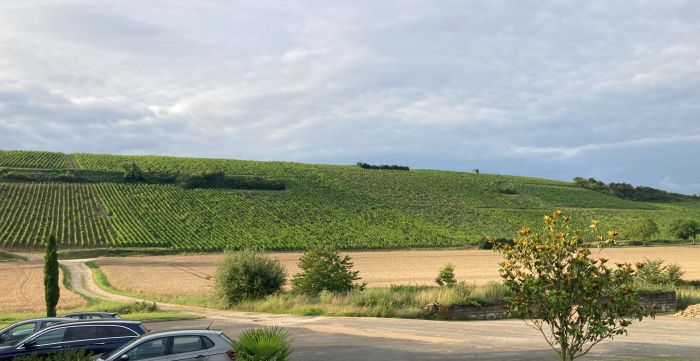
harvest report
26.12.2022
2022 Harvest Report from Alain Girard
<p><strong>A Year of Extreme Conditions for the Vines:</strong></p>
<p>The 2021-2022 winter was fairly mild, with above average temperatures. After a rather clement February, March and April alternated between rain and sunshine, an ideal accompaniment to wake the vines from their slumber. It also meant a precocious start to the vegetative cycle.</p>
<p>It was during this delicate period that two waves of <glossary term="Frost" title="1135">frost</glossary> swept our vineyards. On April 3rd and 4th, temperatures dropped down to -6°C, causing us some serious worries. There was a second <glossary term="Frost" title="1135">frost</glossary> in the night of April 9th into the 10th, this time less brutal. Luckily we did not have too much damage because for the most-part the vegetation wasn't advanced enough and the good weather that followed permitted us to keep the <glossary term="Bud" title="206">buds</glossary> on the vines.</p>
<p>The ensuing warm weather restarted vegetation quickly. <glossary term="Budding" title="1166">Bud-break</glossary> took place in mid-April, two weeks early than a "normal" year. From May onward, we felt a hot, dry atmosphere begin to take hold. Though <glossary term="Flowering" title="1179">flowering</glossary> took place without a hitch in late May, we were already worried about the impact of <glossary term="Drought" title="1167">drought</glossary> as temperatures were already unseasonably hot.</p>
<p>But June calmed things down and brought us some much needed rain, about 80mm falling in the second half of the month. We now had to focus on the risks of <span class="zalup"><span><glossary term="Mildew" title="1137">mildew</glossary><span>,</span></span></span> as <glossary term="Cluster/Bunch" title="1138">bunches</glossary> are particularly sensitive to it at this stage. Once again, our fears were unfounded: July's heat let the <glossary term="Veraison" title="1396">véraison</glossary> take place in ideal conditions. </p>
<p>The heat remained all the way up to <glossary term="Harvest" title="521">harvest</glossary>; through four major heat-waves, we now had to contend with the possibility of a blockage in <span class="zalup"><span><glossary term="Maturation" title="639">maturities</glossary><span>.</span></span></span> We began picking early, but not as early as we'd anticipated, on September 6th. Around the <glossary term="Flowering" title="1179">flowering</glossary> period, everything indicated we'd need to start in August. But the slow <glossary term="Veraison" title="1396">véraison</glossary> rebalanced the grapes and permitted us to <glossary term="Harvest" title="521">harvest</glossary> a bountiful crop.</p>
<p><strong>First Impressions of the Vintage:</strong></p>
<p>The early juices announce a solar <glossary term="Vintage" title="1109">vintage</glossary> that still conserves a good balance and the freshness we expect in the <span class="zalup"><span><glossary term="Loire Valley" title="602">Loire</glossary><span>.</span></span></span> Quantity wise, after a difficult 2021, the volumes bring back a smile to our faces. </p>
<p>The warm summer gave us optimal <glossary term="Maturation" title="639">maturity</glossary> in the grapes, all picked in a remarkable sanitary state. This really permitted the <glossary term="Pinot Noir" title="805">Pinot Noir'</glossary>s <glossary term="Tannin" title="1010">tannins</glossary> to gain in finesse and <span class="zalup"><span><glossary term="Concentration" title="324">concentration</glossary><span>.</span></span></span> The nose is leaning into red fruit and the <glossary term="Tannin" title="1010">tannins</glossary> are well incorporated and and unctuous on the <span class="zalup"><span><glossary term="Palate" title="756">palate</glossary><span>.</span></span></span> </p>
<p>For the <span class="zalup"><span><glossary term="Sauvignon Blanc" title="927">Sauvignons</glossary><span>,</span></span></span> a fruit-forward quality is already showing through. You can taste the hot vintage yet the wine remains fresh. On the nose, white fruit and citrus dominate. </p>
<p>2022 is a qualitative <span class="zalup"><span><glossary term="Vintage" title="1109">vintage</glossary><span>!</span></span></span></p>
Article

harvest report
04.01.2021
2021 Harvest Report from Alain Girard
<p>After a series of solar <span class="zalup"><span><glossary term="Vintage" title="1109">vintages</glossary><span>,</span></span></span> 2021 was a return to the Central <glossary term="Loire Valley" title="602">Loire</glossary>’s DNA: fruit and freshness.</p>
<p><u><strong>In the vines:</strong></u></p>
<p>Once again, winter 2020/2021 was very mild. After a relatively cold January, February temperatures crept up and the second half of the month felt like Spring. It was also raining almost daily. March was more of the same, leading us to anticipate the first <glossary term="Bud" title="206">buds</glossary> appearing in early April.</p>
<p>In less than eight days, the weather went from summer to winter. A mass of cold air traveled throughout France from April 4th to the 8th, bringing negative temperatures throughout the country. This exceptional period of <glossary term="Frost" title="1135">frost</glossary> is the most severe in 30 years. While it’s not unusual to have episodes of <glossary term="Frost" title="1135">frost</glossary> in early April, the fact that it happened a week after what was essentially a winter heat wave was very bad for the vines. Followed by more rain and snow, the impact is important. We can’t yet predict how much of the crop was compromised but we know it’s going to be bad.</p>
<p>As if April <glossary term="Frost" title="1135">frost</glossary> wasn’t bad enough, the negative temperatures continued through May: the bottom of the <span class="zalup"><span><glossary term="Coteau" title="345">coteaux</glossary><span>,</span></span></span> which had been spared in April, are now damaged (though this episode is much less impactful than in April). Overall May was rainy and cool. These conditions made for a slower vegetative cycle; the work surround bud break becomes interminable and under unpleasant weather. T</p>
<p>Then everything started growing: the vines and grass. It’s very hard to maintain good work. Protecting the vines was also challenging as there is heavy <glossary term="Mildew" title="1137">mildew</glossary> pressure. The rains are constant, the chance to intervene short and access to certain <glossary term="Parcel" title="760">parcels</glossary> becomes more and more difficult. The weather was stressful for the vines and those who cultivate it.</p>
<p>We did have one positive aspect to June: <glossary term="Flowering" title="1179">flowering</glossary> took place from the 14th to the 18th under perfect weather conditions. At least one essential part of the vines’ cycle took place under optimal weather.</p>
<p>But July would also be complicated: the rain stayed constant and we only had “summer" weather from July 18th to the 23rd. In these conditions, <glossary term="Mildew" title="1137">mildew</glossary> continued to be a very present threat along with <span class="zalup"><span><glossary term="Oidium" title="737">odium</glossary><span>.</span></span></span> Though we put in a valiant effort, some <glossary term="Parcel" title="760">parcels</glossary> are still negatively impacted by these fungi.</p>
<p>The <glossary term="Veraison" title="1396">véraison</glossary> took place in the middle of August during a period that made us hope we were getting past the bad weather that had stuck with us since April. But we weren’t so lucky! The temperatures remained low and this meant <glossary term="Maturation" title="639">maturation</glossary> took a long time. Still, we could feel the vegetative cycle come to an end.</p>
<p><u><strong>Maturation:</strong></u></p>
<p>For the grapes' <span class="zalup"><span><glossary term="Maturation" title="639">maturation</glossary><span>,</span></span></span> we once again faced unseasonably low temperatures and rainfall. It’s strange because on average the temperatures were normal but we saw very unusual dips. This of course slowed down <span class="zalup"><span><glossary term="Maturation" title="639">maturation</glossary><span>.</span></span></span> The sugars are accumulating slowly and the <glossary term="Acidity" title="71">acidity</glossary> is preserved. In this sense, the weather is positive for the <glossary term="Aromatic" title="120">aromatic</glossary> and <glossary term="Phenols" title="784">phenolic</glossary> ripeness. And while the constant rain meant that the berries were getting nice and plump, it also created an environment ripe for <span class="zalup"><span><glossary term="Botrytis/Noble Rot" title="181">botrytis</glossary><span>.</span></span></span></p>
<p><u><strong>The Harvest:</strong></u></p>
<p>We got off to a slow start and began picking on September 27th. The weather during <glossary term="Harvest" title="521">harvest</glossary> was nuanced. It’s good for the aromas and <glossary term="Tannin" title="1010">tannins</glossary> but the <glossary term="Botrytis/Noble Rot" title="181">botrytis</glossary> pressure remains a threat.</p>
<p><u><strong>First Impressions of the Vintage:</strong></u></p>
<p>The grapes’ <glossary term="Maturation" title="639">maturation</glossary> took place under cooler meteorological conditions than the last few <span class="zalup"><span> <glossary term="Vintage" title="1109">vintages</glossary><span>.</span></span></span> 2021 feels like it conforms to what people expect from the Central <span class="zalup"><span><glossary term="Loire River" title="603">Loire</glossary><span>.</span></span></span></p>
<p>The whites are showing a nice <glossary term="Aromatic" title="120">aromatic</glossary> expression. Notes of fruit dominate: citrus but also peaches and other white fleshed fruit. In some cases there are notes of spice and others have a subtle vegetal quality. Depending on when they were <span class="zalup"><span><glossary term="Harvest" title="521">harvested</glossary><span>,</span></span></span> their balance varies from tender and fresh to mineral tension.</p>
<p>The reds are equally seductive with their fruit (cherry, raspberry, cassis). The <glossary term="Extraction" title="433">extraction</glossary> was in accordance to what the <glossary term="Vintage" title="1109">vintage</glossary> gave us, and the <glossary term="Tannin" title="1010">tannins</glossary> are measured and qualitative. A <glossary term="Malolactic Fermentation" title="622">malolactic fermentation</glossary> will bring the roundness the wines need.</p>
<p>In the end, it was a very unpredictable <glossary term="Vintage" title="1109">vintage</glossary>…</p>
Article
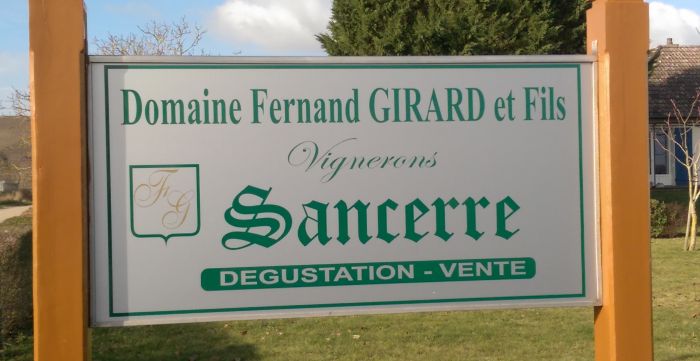
harvest report
13.01.2020
2020 Harvest Report from Alain Girard
<p><u><strong>2020: A Vintage with Only Two Season</strong></u><u><strong>s:</strong></u></p>
<p>2020 will forever be remembered for its unprecedented sanitary crisis. In our world of wine, it will also be remembered for how precocious it was.</p>
<p><u><strong>In the vines:</strong></u></p>
<p>The 2019-2020 winter was the warmest in France since the beginning of the 20th century. As expected, mild winters tend to invite rain and the area witnessed many important downfalls that assured the soils would have solid hydric reserves. </p>
<p>March began just how February ended, with two weeks of almost non-stop rain and moderate temperatures. The second half of March was cold, but not cold enough to reverse course and stop the vegetal cycle from starting very early. A cold snap in April halted <span class="zalup"><span><glossary term="Budding" title="1166">budburst</glossary><span>,</span></span></span> but the weather quickly warmed up and the vines kept at it. <glossary term="Budding" title="1166">Budding</glossary> occurred on April 5th, eight days early than the average this decade.</p>
<p>Above average temperatures persisted. By the end of April, the vines were two weeks in advance compared to a usual year. The vines kept growing through May. It's almost like 2020 is trying to become the year of reference for a precocious <span class="zalup"><span><glossary term="Vintage" title="1109">vintage</glossary><span>!</span></span></span></p>
<p>The rains of May finally reactivated <glossary term="Mildew" title="1137">mildew</glossary> and thus began the protective phase of our work. Overall the weather was not too favorable to <glossary term="Mildew" title="1137">mildew</glossary> but there was a possibility for <glossary term="Oidium" title="737">oidium</glossary> to rear its ugly head in certain sectors so we stayed vigilant. On May 20th, the first flowers were visible. However <glossary term="Flowering" title="1179">flowering</glossary> did not truly start until around May 28th, still two weeks in advance. </p>
<p>June's weather was more gloomy than May's, with covered skies, rain and lower temperatures than usual. The <glossary term="Phenols" title="784">phenological</glossary> advance of the vines therefore did not accentuate itself in this period. We also had <glossary term="Hail" title="1136">hail</glossary> storms at the beginning and end of the month. </p>
<p>The <glossary term="Cluster/Bunch" title="1138">clusters</glossary> began to form in early July. We were feeling more at ease at that point: <glossary term="Veraison" title="1396">véraison</glossary> took place the last week of July, the result of a very dry month. </p>
<p><u><strong>Maturation:</strong></u></p>
<p>The <glossary term="Maturation" title="639">maturation</glossary> took place in an August marked by extreme heat waves. We've once again suffered losses from burnt <span class="zalup"><span><glossary term="Cluster/Bunch" title="1138">clusters</glossary><span>,</span></span></span> as bad as 30% to 50% in the most exposed <span class="zalup"><span><glossary term="Parcel" title="760">parcels</glossary><span>.</span></span></span> Fortunately, a bit of rain in the middle of the cycle made the <glossary term="Cluster/Bunch" title="1138">clusters</glossary> plump up. While sugar <glossary term="Concentration" title="324">concentration</glossary> remained normal, it feels like these episodes of heat waves create a kind of degradation of the grapes' <span class="zalup"><span><glossary term="Malic Acid" title="1247">malic acid</glossary><span>.</span></span></span> <span class="zalup"><span><glossary term="Tartaric Acid" title="1012">Tartaric acid</glossary><span>,</span></span></span> on the other hand, remained present and in fact was above average for the decade. As the heat persisted, we saw very <glossary term="Aromatic" title="120">aromatic</glossary> <glossary term="Maturation" title="639">maturities</glossary> and <glossary term="Phenols" title="784">phenolic</glossary> ripeness. </p>
<p><u><strong>The harvest:</strong></u></p>
<p>We began picking on September 7th with the most precocious <glossary term="Sauvignon Blanc" title="927">Sauvignon</glossary> <glossary term="Plot" title="1133">plots</glossary> then went into the reds. The temperature that first week was actually under average. The weather gave us the luxury of being able to let many days go by in order to <glossary term="Harvest" title="521">harvest</glossary> each <glossary term="Parcel" title="760">parcel</glossary> at its optimal <span class="zalup"><span><glossary term="Maturation" title="639">maturity</glossary><span>.</span></span></span> But by the second week the sugars were rising very quickly. We had to move fast, but also reorganize and only pick in the very early morning or in the evening because it was just too hot. </p>
<p><u><strong>First impressions of the vintage:</strong></u></p>
<p>The wines are well rounded and show remarkable <span class="zalup"><span><glossary term="Concentration" title="324">concentration</glossary><span>.</span></span></span> On the <glossary term="Palate" title="756">palate </glossary>the whites show a superb expression, with different balances depending on when they were harvested. The grapes picked the earliest are more sharp and <span class="zalup"><span><glossary term="Minerality" title="662">mineral</glossary><span>,</span></span></span> and as you go further and further in time the wines get fatter and creamier.</p>
<p>The reds show a color of deep ruby and nuances of purple. The <glossary term="-Select term-" title="">nose</glossary> is complex, mixing fresh red fruit and riper fruit. Our <glossary term="Cuvaison" title="362">cuvaisons</glossary> and <glossary term="Extraction" title="433">extractions</glossary> were well adjusted to the <glossary term="Vintage" title="1109">vintage</glossary> to give the wine good <glossary term="Structure" title="990">structure</glossary> and round <glossary term="Tannin" title="1010">tannins</glossary><span class="zalup"><span><span>.</span></span></span> We think that the <glossary term="Malolactic Fermentation" title="622">malolactic fermentation</glossary> will harmonize things even further.</p>
<p>In the end, it is a very promising <span class="zalup"><span><glossary term="Vintage" title="1109">vintage</glossary><span>.</span></span></span> </p>
Article
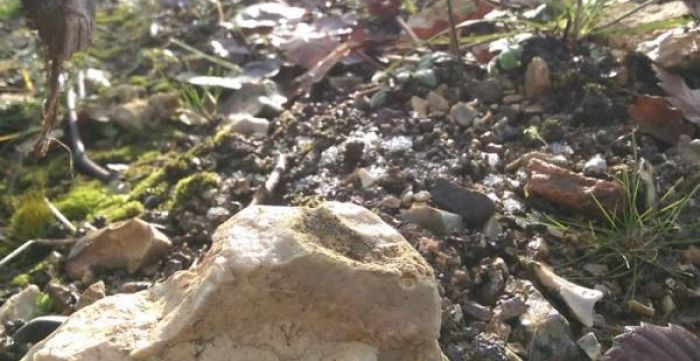
harvest report
08.10.2018
2018 Harvest Report from Alain Girard
<p><strong>Our year in the vines:</strong><br />
<br />
It was a morose winter with a timid sun and abundant rain. After a drenched December, January beat all records with almost double the usual rain fall in this period. February was very cold, with an abnormal drop on the 26th to the 28th. March was quite cool, bordering on cold. Then April was abnormally warm. Such temperatures proved ideal for the <glossary title="1166">budding</glossary> of the vines which took place around mid-April.<br />
<br />
These record breaking temperatures precipitated the vegetation's evolution: growth was dynamic and the <glossary title="784">phenological</glossary> stages followed each other in quick succession. Starting mid-April, temperatures started to plummet. The painful memories of 2016 and 2017's April <glossary title="1135">frosts</glossary> prepared us for the worst. But we would see no <glossary term="Frost" title="1135">frost</glossary> in 2018; a critical stage of the year had been passed.<br />
<br />
May was on the warmer and humid side, though this fluctuated dramatically throughout the month. The result: phases of accelerated growth of the shoots followed by a slowdown. We also started to get more rain around this time. With the humidity this made the vines vulnerable to <span class="zalup"><span><glossary title="1137">mildew</glossary><span>.</span></span></span> We began <glossary title="328">treating</glossary> the vines to combat it in late May and had to stay active and vigilant through June, sometimes unable to do so due to the weather.<br />
<br />
<glossary title="1179">Flowering</glossary> began in the first days of June under good weather: the rain stopped right when we needed it to. <glossary title="1179">Flowering</glossary> was very quick, making us understand early on that 2018 will be a precocious <span class="zalup"><span><glossary title="1109">vintage</glossary><span>.</span></span></span> Starting mid-June, temperatures start rising dramatically: hot with the occasional heat-wave. A new season is officially upon us. June and July prove to be exceptionally hot.<br />
<br />
<strong>Maturation:</strong><br />
<br />
The grapes' <glossary title="639">maturation</glossary> took place under significant heat. The water reserves from the winter's rain permitted this period to go smoothly, save a few sectors that drain rapidly or where the vines' roots cannot dive very deep into the <span class="zalup"><span><glossary title="690">mother rock</glossary><span>.</span></span></span> In the end, the rain we were cursing in May ended up being beneficial.<br />
<br />
Still, the extreme heat did degrade <glossary term="Malic Acid" title="1247">malic acid</glossary> in the grapes. This will also guarantee a lack of any vegetal <glossary title="120">aromas</glossary> or flavors. Sugars, on the other hand, progressed at a good rhythm. We can already see what the wines are going to end up like.</p>
<p><u><strong>Harvest:</strong></u><br />
<br />
A nice September kept the qualitative potential of the <glossary title="521">harvest</glossary> intact. It permitted us to wait for optimal <glossary title="639">maturity</glossary> in each <span class="zalup"><span><glossary title="760">parcel</glossary><span>.</span></span></span> Though the <glossary title="521">harvest</glossary> was announced as precocious, we began on September 10th. It remained sunny throughout.<br />
<br />
Our First Impressions of the Wine:<br />
<br />
The whites are still a bit timid. Notes of pear and mandarine are clearly distinguishable. On the <span class="zalup"><span><glossary title="756">palate</glossary><span>,</span></span></span> the wine is subtle and bright, oscillating between roundness and freshness. The <glossary term="Aromatic" title="120">aromatic</glossary> precision is there. The texture still needs to find its way but the current state is very promising.</p>
Article
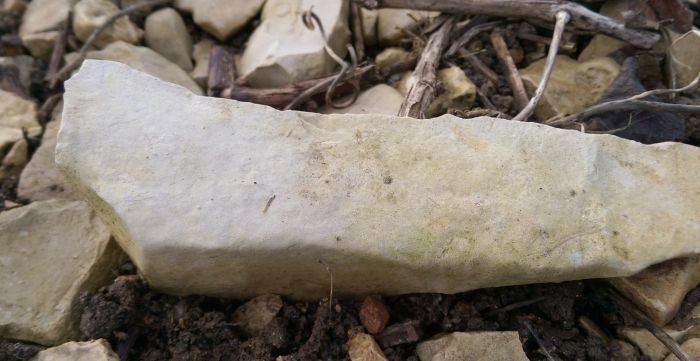
harvest report
18.10.2013
2013 Harvest Report from Alain Girard
<p><u><strong>December 14th, 2013:</strong></u></p>
<p>2013 was a cold and late year. <glossary title="206">Bud</glossary> break was over 10 days late, and Spring's cold and humidity pushed things back even further, with <glossary title="1179">flowering</glossary> about two weeks late. This resulted in <glossary term="Coulure" title="1252">coulure</glossary> and <span class="zalup"><span><glossary term="Millerandage" title="1393">millerandange</glossary><span>,</span></span></span> which explained the size of the grapes at <span class="zalup"><span><glossary title="521">harvest</glossary><span>.</span></span></span><br />
<br />
From mid-June to mid-September, the weather was extremely dry, particularly in July. Because of this, we did not have to worry about <glossary title="1137">mildew</glossary> or <span class="zalup"><span><glossary title="737">odium</glossary><span>.</span></span></span> And with all the water that had accumulated in the soils, the vines did not suffer from dehydration during this dry-spell.<br />
<br />
Going into the fall, we had mild, humid weather up until October 10th. September's mild climate helped <span class="zalup"><span><glossary title="639">maturation</glossary><span>,</span></span></span> concentrating sugars, lowering <glossary title="71">acidities</glossary> and adding <glossary title="120">aromatic</glossary> complexities. It also created pockets of <span class="zalup"><span><glossary title="181">botrytis</glossary><span>.</span></span></span> Because <glossary title="927">Sauvignon's</glossary> skins are thick, this led to <span class="zalup"><span><glossary title="721">noble rot</glossary><span>,</span></span></span> bringing weight and finesse to the grapes.<br />
<br />
We began <glossary title="521">harvesting</glossary> on October 7th and finished on the 18th. We had to pick hastily to <glossary title="1104">vinify</glossary> under the best conditions. The whites are still very tight, with floral aromas dominating. Depending on the <glossary title="1026">terroir</glossary> and the date they were <span class="zalup"><span><glossary title="521">harvested</glossary><span>,</span></span></span> the wines are characterized by a tender freshness and marked <span class="zalup"><span><glossary title="71">acidity</glossary><span>.</span></span></span> This leads us to believe that this style will benefit from <span class="zalup"><span><glossary title="74">aging</glossary><span>.</span></span></span><br />
<br />
I have a feeling this 2013 <glossary title="521">harvest</glossary> will lead to a pleasant surprise.</p>
Article
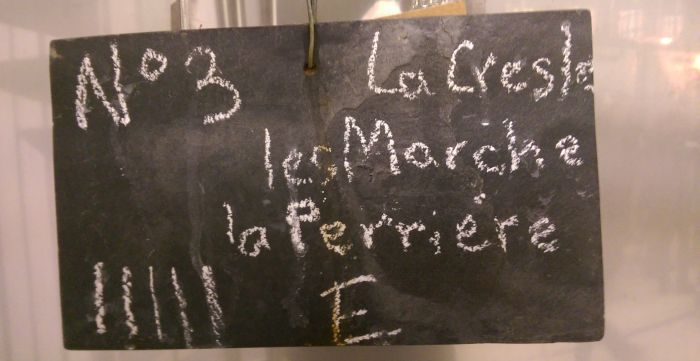
harvest report
03.12.2011
2011 Harvest Report by Alain Girard
<p><u><strong>December 3rd, 2011:</strong></u></p>
<p><glossary title="908">Sancerre</glossary> 2011: The most precocious <glossary title="1109">vintage</glossary> in many decades.<br />
<br />
A mellow end of winter provoked very premature <span class="zalup"><span><glossary title="1179">flowering</glossary><span>,</span></span></span> as early as the first week of April. A very hot and dry Spring accelerated the growth of the vines at an unprecedented pace. In the end, the vines were three weeks in advance, and were fully developed by the last week of May.<br />
<br />
Then the climate began to change, becoming much colder and humid. This was extremely beneficial to the grapes, which were beginning to suffer. Their period of <glossary title="639">maturation</glossary> occurred during warm weather punctuated with localized storms. This accelerated the grape's evolution.<br />
<br />
The grapes' precocious nature and the healthy sanitary state of the vines were the first strong indicators of real qualitative potential. In spite of this, <glossary title="639">maturation</glossary> proved to be rather slow. The grapes are characterized by high sugar levels. Due to the moderate temperature and covered skies of our summer, <glossary term="Aromatic" title="120">aromatic</glossary> freshness was preserved.<br />
<br />
We began <glossary title="521">harvesting</glossary> on September 6th and ended the 20th under bright skies. The <glossary title="1026">terroirs</glossary> that were marked by a lack of water in June and July were the first ones we picked.<br />
<br />
As far as my impression of the wines, the whites are tender and marked with a strong amount of natural sugar. They are voluminous even though the <glossary title="71">acidity</glossary> is not on the forefront of the <glossary title="756">palette</glossary>; in such they are fresh and harmonious. I feel that <span class="zalup"><span><glossary title="120">aromatically</glossary><span>,</span></span></span> they will need a few months of <glossary title="74">aging</glossary> to really open up, but are already showing signs of intensity and elegance. You'll get to find out for yourself in a couple of months!</p>
Article

harvest report
24.10.2009
2009 Harvest Report from Alain Girard
<p><u><strong>The year’s climate:</strong></u><br />
<br />
The winter was cold and relatively dry, April started with three weeks of higher temperatures than normal, and May was also warmer. June and July were right on the average, and after mid-August it got really hot. On May 7th and July 16th, storms brought destructive <glossary title="1136">hail</glossary> to our vines, other rain storms kept the humidity sufficient in the soil until <span class="zalup"><span><glossary term="Veraison" title="1396">véraison</glossary><span>.</span></span></span> <glossary title="1137">Mildew</glossary> was the main problem all through the season, but the dry spell of August and September gave us very healthy grapes. The <glossary title="1129">yields</glossary> are, alas, the lowest of many past years.<br />
<br />
<u><strong>Maturation:</strong></u><br />
<br />
The sugar content shot up quickly and ended pretty high, while the <glossary title="71">acidity</glossary> levels remained good, thanks to cool nights in early September, and the <glossary title="1167">drought</glossary> conditions.</p>
<p><u><strong>Harvest:</strong></u><br />
<br />
The official date was Sept. 21st in <span class="zalup"><span><glossary title="908">Sancerre</glossary><span>.</span></span></span> We started on Sept. 24th and ended on Oct. 6th. We had good balance of sugar and <glossary title="71">acidity</glossary> in all our <span class="zalup"><span><glossary title="1133">plots</glossary><span>,</span></span></span> and picking was comfortable, with dry warm days.</p>
<p><u><strong>Vintage:</strong></u></p>
<p>This is a year for the annals, with <glossary title="990">structure</glossary> and vinosity. The whites have subdued, very fine aromas, mainly fruity, with <glossary title="662">mineral</glossary> and floral notes underlined by fresh <span class="zalup"><span><glossary title="71">acidity</glossary><span>.</span></span></span> These are generous wines, with fat and body, even a touch of heat, and a lively finish.</p>
Article

harvest report
09.10.2006
2006 Harvest Report from Alain Girard
<p><u><strong>October 9th, 2006:</strong></u></p>
<p>At the end of a hot and dry year, our vines produced grapes with high quality potential.<br />
<br />
The winter was dry, and so were June and July, also unusually hot. In August, low temperatures allowed the vines to get some rest, and it rained sufficiently to help the grapes <span class="zalup"><span><glossary term="Maturation" title="639">mature</glossary><span>.</span></span></span> The two first weeks in September were very hot, and ended with a thunderstorm on September 15th.<br />
<br />
The sugar levels were high, <glossary term="Acidity" title="71">acidity</glossary> was balanced. The overcast sky of the second half of September maintained good <glossary term="Acidity" title="71">acidity</glossary> and <glossary term="PH" title="783">ph</glossary> levels.<br />
<br />
We started on September 18th. Our first impression of the <glossary term="Vintage" title="1109">vintage</glossary> is that the wines are going to be balanced and round, fresh and <span class="zalup"><span><glossary term="Aromatic" title="120">aromatic</glossary><span>.</span></span></span></p>
Article

harvest report
25.09.2005
2005 Harvest Report from Alain Girard
<p><u><strong>September 22nd, 2005:</strong></u></p>
<p>We started harvesting on Monday, September 19, 2005, a glorious sunny day. The grapes are beautiful and of great quality. Today, Thursday, the weather is still magnificent. Let’s hope it stays like this until the end of the <span class="zalup"><span><glossary term="Harvest" title="521">harvest</glossary><span>.</span></span></span></p>
<p><u><strong>September 25th, 2005:</strong></u></p>
<p>It’s been a dry summer, the <glossary title="1179">flowering</glossary> went well and then by chance we were spared the <glossary title="1136">hail</glossary> which hit the neighboring slopes of Sury-en-Vaux and Saint Gemme on July 28th.<br />
<br />
The official start of the <glossary title="521">harvest</glossary> in <glossary title="908">Sancerre</glossary> was September 17, 2005. The weather conditions this season have been ideal for a good <span class="zalup"><span><glossary title="521">harvest</glossary><span>:</span></span></span></p>
<p>- Sugar levels have developed well<br />
- <glossary title="71">acidity</glossary> levels have been maintained<br />
- the <glossary title="927">Sauvignon</glossary> grapes that we have tasted show good <glossary title="120">aromas</glossary><br />
<br />
<glossary title="1109">Vintage</glossary> 2005 looks like it will be well balanced and should be of great quality.</p>
Article
















